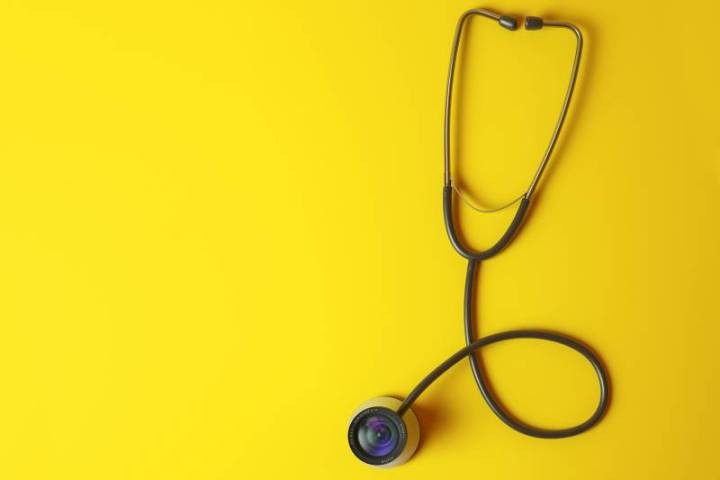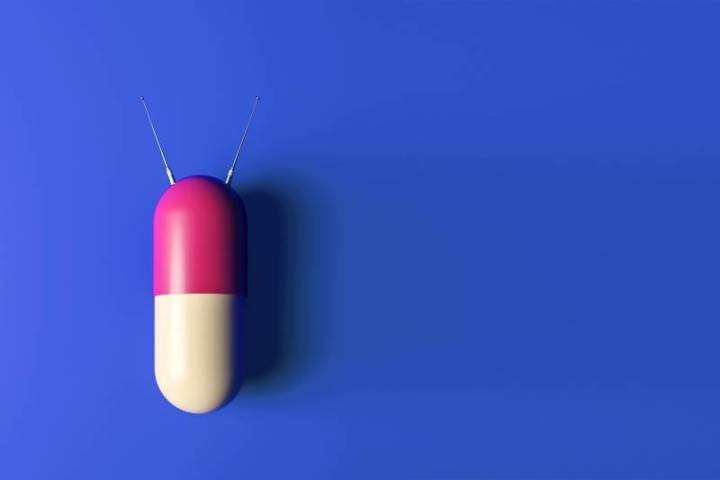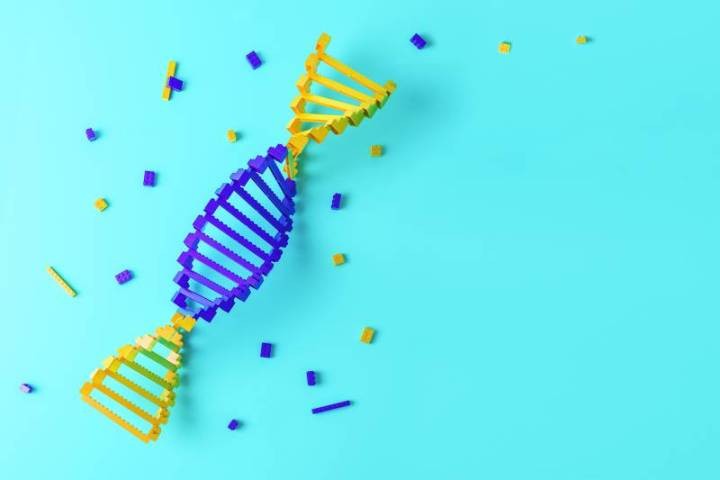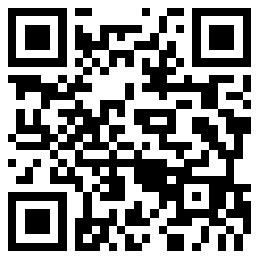這些高科技公司將給醫(yī)療行業(yè)帶來你想不到的革命
?
?
|
人們一生中要做很多選擇。有些選擇微不足道,,例如早晨穿什么衣服,;另一些則可能改變整個人生,,例如選擇從事的職業(yè)。但有一項(xiàng)非常重要的決策不由任何人定,,即來到這個世界成為人類一員,,以及天生的疾病和缺陷。 這便是醫(yī)療行業(yè)明顯有別于其他行業(yè)之處,。醫(yī)藥行業(yè)經(jīng)??梢詻Q定生死。而在世界上絕大多數(shù)地方,,醫(yī)藥行業(yè)都很混亂,、低效且昂貴,急需大力改革,。 先看些讓人揪心的數(shù)字,。2015年美國近四分之一非老年成人出現(xiàn)醫(yī)藥費(fèi)逾期。比起2012年這還是進(jìn)步,,當(dāng)時(shí)逾期比例接近30%(比例降低的原因之一可能是平價(jià)醫(yī)療法案下醫(yī)保覆蓋面增加),。2015年的密西西比州,37%人口欠醫(yī)療機(jī)構(gòu)錢,。醫(yī)療支出是個人破產(chǎn)最主要原因,。去年聯(lián)邦政府預(yù)計(jì)每人醫(yī)療支出將超過1萬美元,為史上第一次,。 公共和私人醫(yī)療系統(tǒng)如此昂貴,,實(shí)際運(yùn)作如何呢?現(xiàn)實(shí)是想面對面看醫(yī)生得等好幾個星期,,超過6500的地方醫(yī)療專業(yè)人士沒法滿足病患需要,,而且美國醫(yī)院的治療結(jié)果比起很多發(fā)達(dá)國家都很一般(甚至比不上一些欠發(fā)達(dá)國家)。 現(xiàn)狀不妙,,說明是時(shí)候顛覆了,。要來一場真正的改革需要各方參與,從政府,、行業(yè)到醫(yī)療消費(fèi)者自身都要調(diào)整,,目前來看,拖著美國醫(yī)療行業(yè)不情不愿走進(jìn)21世紀(jì)的倒是一群數(shù)字醫(yī)療公司,。 數(shù)字醫(yī)療的好處在于擯棄了實(shí)體局限,,例如以前非得建起醫(yī)院,現(xiàn)在則是充分發(fā)揮移動技術(shù)的力量,,通過潛心研究人類自身尋找復(fù)雜疾病的治療之道,。 為了一窺科技引領(lǐng)的未來有哪些可能,我們先來看看21家創(chuàng)新公司在忙什么,這些公司分為五類,,每一類都在挑戰(zhàn)各自領(lǐng)域的傳統(tǒng)治療方式,。 歡迎參觀數(shù)字醫(yī)療革命。 |
There are many choices we make over the course of our lives. Some are fairly insignificant, like the clothes we put on in the morning; others, such as the vocations we settle on, have life-changing consequences. But there’s one critical decision we don’t get to make: the choice of being born into a human body—and all the arbitrary ailments and inevitable biological breakdowns that follow. This is what sets health care apart from other industries. The ?business of medicine is quite literally one of life and death. And throughout much of the world, it remains a messy, inefficient, ?expensive sector in need of radical reform. Just consider some of the heart-wrenching numbers. Nearly one in four non-elderly American adults had past-due medical debt in 2015. That’s actually an improvement from 2012, when the figure was closer to 30% (insurance coverage gains under the Affordable Care Act are one likely reason for the decline). In Mississippi, more than 37% of the population owed money to care providers in 2015. Medical expenses are the top driver of personal bankruptcies. And last year the federal government projected that the nation’s health care bill would top $10,000 per person for the first time in history. So what do we get for these extravagant private and public costs? A system where it takes weeks to see a doctor face-to-face, where more than 6,500 locales are officially deemed to have too few medical professionals to meet patients’ needs, and where U.S. health outcomes are consistently mediocre compared with those of many of our developed-nation peers (and even some of the less developed ones). This status quo is ripe for disruption. And while true reform will require all the relevant parties—government, industry, and health care consumers themselves—to make major adjustments, an insurgent group of digital health companies is doing its best to drag American medicine into the 21st century kicking and screaming. That means superseding physical constraints like having an actual hospital by harnessing the power of mobile technology, making the act of taking your medicine less of a hassle, and peering into our very biological building blocks to wage war on the most intractable maladies. To offer a preview of what this tech-optimized future might look like, we identified 21 innovative companies in five categories—each of which is challenging the conventional approach to medicine. Welcome to the digital health revolution. |

圖片提供:molistudio
|
遠(yuǎn)程醫(yī)療 如何讓醫(yī)療服務(wù)穿過實(shí)體圍墻,。 20世紀(jì)初那些年,在美國看病通常意味著醫(yī)生來找你,。過去的醫(yī)生帶著黑色藥箱,,里面裝滿治療工具,治療手段也都是舊式的,,看病經(jīng)常就在床前,。 現(xiàn)在看起來這一幕有些怪異,但未來可能會變回這樣,。新技術(shù)讓醫(yī)生出診更方便,,只是變成了數(shù)字方式。 相關(guān)公司 現(xiàn)在有很多遠(yuǎn)程醫(yī)療公司,,從波士頓的“美國健康”(American Well)到舊金山創(chuàng)業(yè)公司Doctor On Demand都在把醫(yī)療服務(wù)送到門口,,更普遍的是送到辦公室。全美企業(yè)員工健康組織去年調(diào)研了133家大型企業(yè),,共計(jì)1500萬美國員工的福利待遇,,竟然有90%的企業(yè)表示預(yù)計(jì)今年至少會向員工提供部分遠(yuǎn)程醫(yī)療服務(wù)。到2019年,,所有企業(yè)都會提供,。 未來世界到底會是什么樣呢?想象下你工作好幾個小時(shí)突然感覺有點(diǎn)想發(fā)燒頭暈,,可以走到公司里的數(shù)字醫(yī)療服務(wù)站,,其實(shí)就是個信息亭(更直白點(diǎn)說就是個電話亭一樣的地方),然后可以立刻通過電話或視頻咨詢醫(yī)生,。醫(yī)生可以即時(shí)提供檢測,,例如體溫、脈搏和血壓,,如果有必要會將處方發(fā)送到最近的藥房,。或許只會叮囑你回家休息一下,。 去年12月,,“美國健康”公司與康森特拉公司(Concentra)達(dá)成合作,確保了部分值班醫(yī)生供給,??瞪乩?0個州擁有超過300家醫(yī)療中心。 遠(yuǎn)程醫(yī)療一個明顯優(yōu)勢在于醫(yī)生可以身處任何地方,傳統(tǒng)醫(yī)療系統(tǒng)可做不到,。全國各地都很缺醫(yī)生,,隨著近年來上成百上千萬美國人加入醫(yī)保系統(tǒng),醫(yī)生緊缺越發(fā)嚴(yán)重,。 新型數(shù)字醫(yī)療平臺可以順道解決缺醫(yī)生的問題,。一家名叫Nomad Health的紐約創(chuàng)業(yè)公司可以匹配醫(yī)生和缺醫(yī)生的醫(yī)院,主要在三個領(lǐng)域:內(nèi)科,、急診和精神科,。Nomad公司聯(lián)合創(chuàng)始人阿雷西·納澤姆博士(Alexi Nazem)接受《財(cái)富》雜志采訪時(shí)表示,其匹配醫(yī)療行業(yè)人才的方式類似民宿行業(yè)的愛彼迎(Airbnb),。通過專業(yè)匹配流程,,醫(yī)療系統(tǒng)可以尋找具備特定資質(zhì)的醫(yī)生(例如7月能在紐約地區(qū)醫(yī)院工作,具有五年從醫(yī)經(jīng)驗(yàn)的內(nèi)科醫(yī)生),,幫醫(yī)生找醫(yī)院也是同樣道理,。如果醫(yī)院和醫(yī)生簽訂合同,平臺還自動提供醫(yī)療事故保險(xiǎn),。 從醫(yī)療資源匹配角度來看,,這簡直太方便了。而且形成了醫(yī)療行業(yè)的“零工經(jīng)濟(jì)”(gig economy),,年輕一代對科技較敏感的醫(yī)生非常熱愛,。“我們很容易就找到一大群愿意短期,、自由且靈活執(zhí)業(yè)的醫(yī)生,,”納澤姆表示?!岸椅蚁嘈炮厔輹永m(xù)下去(尤其在千禧一代中),,不僅因?yàn)椋ㄡ槍︶t(yī)療領(lǐng)域自由職業(yè))態(tài)度在轉(zhuǎn)變,而且隨著科技進(jìn)步,,很多工作確實(shí)可以遠(yuǎn)程完成,。”去年夏天該公司早期融資獲得400萬美元,,領(lǐng)投方包括首輪資本公司(First Round Capital)和科技創(chuàng)業(yè)投資公司(RRE Ventures),。 投身移動醫(yī)療的還不只醫(yī)療創(chuàng)業(yè)公司。優(yōu)步和Lyft等網(wǎng)約車巨頭也啟動新項(xiàng)目,,向去醫(yī)院就醫(yī)有困難的病人提供非急救醫(yī)療轉(zhuǎn)運(yùn)服務(wù),。去年新成立名叫Circulation的平臺將醫(yī)療病例接入優(yōu)步的應(yīng)用接口,護(hù)士,、護(hù)理人員和醫(yī)院運(yùn)輸協(xié)調(diào)員可以更好地安排接病人的次序,,而且可以滿足病人個性化需要(例如病人需要輪椅或是眼睛看不清),。 未來 總有一天各式新技術(shù)可能完全改變醫(yī)療服務(wù)提供和接受的方式。但那一天來臨之前,,還需要一些必要的鋪墊——包括保險(xiǎn)公司新的償付規(guī)則,,以及政策調(diào)整允許醫(yī)生跨州執(zhí)業(yè),不必額外申請執(zhí)照或許可,。還有個問題就是移動醫(yī)療究竟能不能降低醫(yī)療消費(fèi),,最近一項(xiàng)報(bào)告稱新科技可能導(dǎo)致過度醫(yī)療,因?yàn)樘憷?/p> 不過,,還是要順勢而為,。畢竟對消費(fèi)者來說,方便一定是最重要的,,如果既方便又便宜呢?那就誰也沒法拒絕了,。 |
Telemedicine How health care is transcending physical walls. At the turn of the 20th century, getting a checkup in America frequently meant your doctor came to you. Armed with a modest black bag of tools and old-fashioned medical know-how, physicians of yore would often take care of you right at your bedside. As quaint as that image may seem today, it’s in some ways a vision of the future. New technologies are bringing back the house call—or a digital version of it, anyway. The Companies A slew of telehealth companies, from the Boston-based ?American Well to San Francisco startup ?Doctor On Demand, are again bringing health care to your doorstep—or more commonly, to your workplace. The National Business Group on Health last year surveyed 133 large companies employing 15 million Americans about their benefit practices: An astounding 90% said they expect to make at least some telemedicine services available to their workers this year. By 2019, nearly all of them will. So what does that brave new world look like? Say you’ve been working after hours and suddenly feel feverish and woozy. You would walk down the hall to your company’s on-site digital health station—that’s a fancy word for “kiosk” (which, in turn, is a fancy word for “booth”)—where you would consult with a physician immediately by phone or video. That same doctor can take your vital signs—temperature, pulse, blood pressure—and if needed, send a prescription to the nearest pharmacy. Or maybe just tell you to go home and get some rest. In December, American Well partnered with Concentra, which has more than 300 medical centers in 40 states, to provide some of those on-call physicians. One obvious advantage of telemedicine is that the doctor can be anywhere—which is not the case for our traditional health care system. At hospitals across the country, in fact, there is an entrenched doctor shortage, which has grown only more acute as millions of Americans have gained health coverage in recent years. New digital platforms are helping to solve that problem too. One New York startup, Nomad Health, pairs doctors with hospitals in need of physicians in three specialties—internal medicine, emergency medicine, and psychiatry. Nomad cofounder and CEO Dr. Alexi Nazem, in an interview with Fortune, likens the system to an Airbnb model for medical staffing. The professional matchmaking process lets health systems find doctors with specific credentials (say, an internal medicine specialist with five years’ experience who is free to work at a New York–area hospital in July) and vice-versa. The platform then automatically takes care of tasks like providing malpractice insurance if the hospital and doctor strike a contract. This isn’t just convenient from a medical resource perspective; it also plays into a nascent “gig economy” in health care that’s become increasingly popular among younger, tech-savvy physicians. “With very little effort we’ve been able to tap into a huge flow of doctors who want to do short-term, freelance, flexible work,” says Nazem. “And I think that trend will continue [among millennials] not only because of the attitudinal shift [on freelance medical work] but also because the existence of technology actually makes it possible to do this kind of work.” Last summer the company raised $4 million in an early funding round led by First Round Capital and RRE Ventures. And it’s not just medical startups driving this mobile health surge. Ride-sharing giants Uber and Lyft have started new programs to provide non-emergency medical transport for patients who struggle to get to a hospital. One platform that launched last fall, called Circulation, integrates medical records into Uber’s API so that nurses, caregivers, and hospital transportation coordinators can more easily schedule rides for patients and accommodate their needs (such as if they have a wheelchair or trouble seeing). The Future These technologies may one day fundamentally shift the way that health care is delivered and consumed. But before that transformation takes hold, some other changes will have to happen—including new reimbursement rules from insurance companies and policy shifts that make it easier for physicians to practice across state lines without gaining extra licenses or accreditation. There’s also the matter of whether mobile medical care will ultimately reduce national health spending: At least one recent report suggests that the technology may well cause people to pursue care they don’t need precisely because it makes it so convenient to get. Still, don’t bet against the trend. For consumers, after all, convenience has always been king—and convenient and cheap? Well, there’s no beating that. |

圖片提供:molistudio
|
算法醫(yī)藥 大數(shù)據(jù)和人工智能推動學(xué)習(xí),。 近來“大數(shù)據(jù)”談得太多,人們已經(jīng)很難想起大數(shù)據(jù)的“大”到底怎么回事,。據(jù)IBM統(tǒng)計(jì),,每天新增數(shù)據(jù)達(dá)2.5百億億字節(jié)。醫(yī)療行業(yè)里,,每小時(shí)新增的研究報(bào)告,、臨床試驗(yàn)、科學(xué)研究和病人醫(yī)療信息不計(jì)其數(shù),。醫(yī)生和醫(yī)療研究人員得顧及每個細(xì)節(jié),。 機(jī)器學(xué)習(xí)和人工智能要參與。計(jì)算機(jī)沒有人類的弱點(diǎn),,例如要吃要睡,,所以可以幫助人類迅速遍覽學(xué)術(shù)文獻(xiàn),還可以查看CT掃描,,電子病歷,,以及海量臨床試驗(yàn)和基因研究數(shù)據(jù)。人工智能可以告訴醫(yī)藥廠商哪些病人療效最好,,還能改變醫(yī)院的管理方式,。 相關(guān)公司 藍(lán)色巨人IBM的蛻變仿佛一夜之間,向來西裝筆挺示人的百年老店從呆板的大型機(jī)生產(chǎn)商和咨詢行業(yè)巨頭變成了數(shù)字醫(yī)療行業(yè)的領(lǐng)頭羊——而且全靠一款人工智能產(chǎn)品,。IBM應(yīng)該好好感謝超級計(jì)算機(jī)“沃森”(Watson),,這款贏下美國智力游戲Jeopardy!的認(rèn)知機(jī)器明星。如今IBM旗下沃森醫(yī)療部門業(yè)務(wù)十分繁忙,,而且似乎每天都在拓展人工智能的應(yīng)用領(lǐng)域,。 沃森醫(yī)療成立兩年來,迅速與不少知名學(xué)術(shù)機(jī)構(gòu)達(dá)成合作,例如史隆凱特琳癌癥研究中心,、注明生物醫(yī)藥公司輝瑞,、美敦力和強(qiáng)生公司等。每起合作中沃森的角色基本一致:處理大量數(shù)據(jù)尋找暗含的規(guī)律,,最好能得出新觀點(diǎn),。沃森不僅能解讀電子病歷,還能處理所謂的非結(jié)構(gòu)化數(shù)據(jù)(例如X光片或腦補(bǔ)掃描片提供的數(shù)據(jù)),。 跟遠(yuǎn)程醫(yī)療一樣,,沃森的處理結(jié)果也可實(shí)現(xiàn)移動化。例如今年早些時(shí)候,,沃森負(fù)責(zé)腫瘤的部門首次與佛羅里達(dá)朱庇特一家327床位的社區(qū)醫(yī)院合作,,利用超級計(jì)算機(jī)為癌癥病人尋找最可能奇效的療法(也要多虧史隆凱特琳癌癥研究中心精心審查過的臨床數(shù)據(jù)支持)。 要是人工智能和深度學(xué)習(xí)能幫醫(yī)生分析一下病人的臉,,不用掃描或測試就可以診斷該多好,?波士頓創(chuàng)業(yè)公司FDNA就在努力通過Face2Gene平臺實(shí)現(xiàn)。該公司收集了罹患2000種罕見基因病的病人照片建立數(shù)據(jù)庫,。醫(yī)生可以拍下病人的照片,,上傳到FDNA應(yīng)用里,程序可以通過面部特征對比分析出可能存在的病癥(這項(xiàng)技術(shù)并非診斷工具,,但能縮小可能的基因病范圍,。)FDNA的目標(biāo)是大為縮短罕見病的“診斷歷程”,目前罕見病病人平均要就診七次才能確診,。 這類技術(shù)的主要目標(biāo)是降低成本,,盡可能及早開始治療,也可以用來解決一些醫(yī)院的管理流程痼疾,,例如等待時(shí)間過長,。去年10月,通用醫(yī)療(GE Healthcare)和約翰·霍普金斯醫(yī)院(Johns Hopkins Hospital)聯(lián)合成立了全數(shù)字中心,,以提高日常運(yùn)營效率,。該中心名叫朱迪賴茨指揮中心(Judy Reitz Capacity Command Center),每分鐘會從十多個霍普金斯醫(yī)院信息系統(tǒng)獲取約500條信息,,通過預(yù)測分析將大量數(shù)據(jù)轉(zhuǎn)化為行動建議,,避免流程不暢,幫助病人要么盡快入院治療或要么迅速出院,。 從約翰霍普金斯醫(yī)院的案例來看,,初步效果非常不錯。該醫(yī)院表示,,指揮中心指派救護(hù)車前往別處的時(shí)間減少了超過一小時(shí),,急診室病人安排床位的時(shí)間減少了30%,。 未來 來看看嚴(yán)峻的現(xiàn)實(shí)吧:就算計(jì)算機(jī)能力再強(qiáng),如果數(shù)據(jù)不共享也無法根據(jù)數(shù)據(jù)作出判斷,??赡苈犉饋聿豢伤甲h,但白宮抗癌登月計(jì)劃特別小組前執(zhí)行主任格雷格·西蒙(Greg Simon)表示,,“在醫(yī)療世界里信息還十分匱乏,。” 近年來,,聯(lián)邦政府和私營機(jī)構(gòu)一直鼓勵數(shù)據(jù)共享,,舉辦了類似基因組數(shù)據(jù)共享之類的“統(tǒng)一數(shù)據(jù)儲存庫”活動,鼓勵公開研究結(jié)果以加快癌癥治療,。但若想取得實(shí)質(zhì)進(jìn)展只靠一些公共私營領(lǐng)域的活動還不夠,,要改變的是整個思路,要變得愿意積極共享,,而且切實(shí)做到才行,。 |
Algorithmic Medicine Big data and AI push learning. The term “big data” gets tossed around so casually that it’s easy to forget just how big “big” really is. Consider that 2.5 quintillion bytes of data are created every day, according to IBM (ibm, -1.79%). In health care, this amounts to an hourly avalanche of new research papers, clinical trials, scientific studies, and patient health information. And it’s impossible for doctors and medical researchers to keep up with even a tiny fraction of it. Enter machine learning and artificial intelligence. Shorn of human weaknesses like the need to eat or sleep, computers are now speed-?reading through not only the vast academic literature but also CT scans, electronic medical records, and mountains of data from clinical trials and genomic studies. AI is also giving drugmakers critical insights into who benefits most from their treatments and changing the way hospitals manage their administrative operations. The Companies With IBM, the metamorphosis seems to have happened overnight: The starched-shirt centenarian went from a stolid mainframe and consulting giant to an upstart digital health pioneer—all in the blink of an AI. Big Blue can thank Watson—its Jeopardy!-winning, cognitive computing superstar—for that. And the company’s ravenous dealmaking business unit, IBM Watson Health, seems to be redefining daily what AI applications can be used for. In the two years since Watson Health launched, it has struck partnerships with an impressive array of academic institutions, such as the Memorial Sloan Kettering Cancer Center and prominent biopharma companies like Pfizer (pfe, -1.14%), Medtronic (mdt, -1.52%), and Johnson & Johnson (jnj, -0.86%). In each case, Watson is given roughly the same task: Feast on reams of data and find hidden patterns—and hopefully new knowledge—within them. Watson can do this with electronic medical records as well as with so-called unstructured data (like that found in the image of an X-ray or brain scan). And as with telemedicine, its insights can be made mobile. Earlier this year, for instance, Watson’s oncology-focused unit struck its first deal with a community hospital, a 327-bed outfit in Jupiter, Fla., that can now harness the supercomputer’s power to match cancer patients with the treatments most likely to help them (thanks to a clinical data set expertly reviewed by Memorial Sloan Kettering). But what if AI and deep learning could help doctors figure out a patient’s disease simply by analyzing a face—no scans or testing required? That’s precisely what Boston-based startup FDNA is trying achieve with its Face2Gene platform. The firm has put together a photo database of people with more than 2,000 rare genetic diseases. Doctors can snap pictures of their patients and upload them to FDNA’s mobile app, which then spits out a list of disorders they might have by analyzing telltale facial features associated with those conditions (the tech is not a diagnostic tool, but rather a way to narrow down the list of possible genetic suspects). And the company hopes the system can drastically improve the “diagnostic journeys” that those with rare diseases typically face: Such patients, on average, are seen by seven doctors before the correct diagnosis is made. Cutting costs and catching on to illnesses as early as possible are major goals for this type of tech. But it can also be used to combat administrative headaches like long hospital wait times. Last October, GE Healthcare and the Johns Hopkins Hospital launched a fully digital hub to better manage everyday operations. The Judy Reitz Capacity Command Center gets a constant influx of data about important events at the hospital; it receives about 500 messages every minute from more than a dozen different Hopkins IT systems and with the help of predictive analytics turns this swamp of data into suggestions for action that prevent bottlenecks and get patients both into and out of the hospital faster. And, according to Johns Hopkins at least, it’s showing impressive early results. The hospital says the command center has shaved more than an hour off the time it takes to dispatch an ambulance to another facility and that emergency room patients are assigned a bed 30% faster than before. The Future Now for a sobering fact: All the whiz-bang computing power in the world can’t find knowledge in the data if the data isn’t shared to begin with. And surprising as it may seem, says Greg Simon, former executive director of the White House Cancer Moonshot, we “still live in an information-scarce medical world.” The federal government and private organizations have tried to encourage sharing in recent years through initiatives like the Genomic Data Commons, a “unified data repository” intended to hasten cancer cures by making research public. But real progress on this front will take more than a handful of public-private initiatives: It will require a change in mind-set—a radical new willingness to share and share alike. |

圖片提供:molistudio
|
新一代藥物 輸藥革命. 19世紀(jì)50年代,皮下注射針頭正式踏上醫(yī)藥歷史舞臺,,這項(xiàng)技術(shù)結(jié)合了兩項(xiàng)關(guān)鍵創(chuàng)新:將傳統(tǒng)的注射器(由金屬改為玻璃,方便觀測劑量)與鋒利中空的針頭結(jié)合起來,。一開始這項(xiàng)創(chuàng)新主要用來給受病痛折磨的病人注射強(qiáng)效阿片類止疼藥,,但隨著1921年胰島素發(fā)明,該技術(shù)立刻成為關(guān)鍵,。因?yàn)楦固鬯幉灰粯?,胰島素不可口服,只能通過針頭注射或注射泵輸入,,人體才能吸收并控制血糖,。 從那之后人類利用藥物的方式持續(xù)改進(jìn),如今注射方式也可以淘汰了,,各種革新還在進(jìn)行中,。 相關(guān)公司 過去幾年里,Braeburn制藥公司,、 Intarcia 醫(yī)藥公司, 以及Proteus數(shù)字醫(yī)療公司都在努力研發(fā)新設(shè)備提升現(xiàn)有藥物效力,,從而實(shí)現(xiàn)更好的療效。如果真能實(shí)現(xiàn),,糖尿病人終于可以放下心來,,每次測血糖之前不用再惴惴不安,也不用再費(fèi)勁調(diào)整胰島素劑量,。止疼藥上癮戒斷者也能看到希望,,不用擔(dān)心因未能嚴(yán)格遵守治療流程出現(xiàn)復(fù)發(fā),。 去年5月,Braeburn制藥與合作方泰坦制藥成為首批獲得美國食品藥品管理局(FDA)批準(zhǔn),,通過植入治療止疼藥上癮,。其產(chǎn)品名為Probuphine,是火柴大小的植入劑,,通過簡單的門診處理就能植入病人上臂,。該設(shè)備可以釋放丁丙諾啡,本身也是一種止疼藥,,但不會像奧施康定和嗎啡等強(qiáng)力止疼藥一樣產(chǎn)生精神愉悅和上癮的快感,。 植入Probuphine后,上癮病人不用再特地服用丁丙諾啡,,而是由植入劑持續(xù)向血液釋放小劑量藥物,,確保病人按照處方服用。每個植入劑可以使用長達(dá)六個月,。 長期自動的藥物輸送系統(tǒng)可以簡化很多疾病的治療,,從腦部疾病到糖尿病都可采用。事實(shí)上,,總部位于波士頓的Intarcia目標(biāo)之一就是糖尿病,。該公司正向FDA申請一套皮下注射系統(tǒng),據(jù)稱可以穩(wěn)定釋放治療糖尿病的藥物,,持續(xù)時(shí)間可達(dá)六個月或更久,。特別值得注意的一點(diǎn)是,哪怕還沒獲得市場推廣許可,,已經(jīng)有人認(rèn)為這項(xiàng)技術(shù)可以用來對付另一種致命瘟疫:艾滋病,。比爾及梅林達(dá)·蓋茨基金會表示將向Intarcia投資近1.4億美元,希望其開發(fā)的設(shè)備可以輸送預(yù)防藥物,,幫助艾滋病高危人群預(yù)防,。 此類創(chuàng)新的目標(biāo)都是解決必需藥物不夠有效的問題,也就是說病人還是要遵醫(yī)囑服藥,。不遵照醫(yī)囑成本巨大,,一些研究顯示每年因不遵醫(yī)囑浪費(fèi)金額近3000億美元。 將服藥過程自動化是解決方法之一,。不過硅谷創(chuàng)業(yè)公司Proteus數(shù)字醫(yī)療選擇另辟蹊徑,。該公司開創(chuàng)了“小藥丸”平臺,幫助醫(yī)生根據(jù)病人的生物特征檢測是否遵照醫(yī)囑服藥,,病人口服(和貼身攜帶)傳感器后,,可向智能手機(jī)傳輸數(shù)據(jù)供醫(yī)生查看。這樣,,患有高血壓和糖尿病的慢性病人(跟醫(yī)生一起)就能算出最合適的藥物劑量,。 未來 通過改進(jìn)服藥方式,,發(fā)達(dá)國家每年可以節(jié)省數(shù)十億美元的醫(yī)療支出。最貧窮的國家也可以借此預(yù)防和治療疾病,,可以通過皮膚貼片管理疫苗,,也可以通過長期有效的植入劑注射預(yù)防艾滋病的藥物??磥硇〉结t(yī)藥行業(yè)的藥物輸送領(lǐng)域,,也處在變革的陣痛之中。 |
Next-Generation Capsules The evolution of drug delivery. The hypodermic needle made a splash on the medical stage in the 1850s by combining two key inventions: the conventional syringe (eventually converted from metal to glass so that users could better measure doses) and sharp, hollow needles. While the innovation was initially used for ?purposes such as injecting pain sufferers with powerful opioids, it became a true game changer once insulin came on the scene in 1921. Unlike painkillers, insulin can’t be ingested—it has to be administered via an injection or a pump in order for the body to absorb it and control blood sugar. The way that we take our drugs has continued to evolve in the decades since then—syringes became disposable, for example—and the progress is far from over. The Companies In the past few years companies like Braeburn Pharmaceuticals, Intarcia Therapeutics, and Proteus Digital Health have set out to create better medical mousetraps through devices that make existing drugs more effective. That means peace of mind for diabetes patients, who no longer have to constantly prick their fingers to measure blood sugar and manually adjust insulin doses, and hope for recovering opioid addicts, who might face a relapse if they don’t adhere to a strict treatment protocol. Last May, Braeburn and partner Titan Pharmaceuticals became the first companies to win Food and Drug Administration (FDA) approval for an implant to treat opioid addiction. Their product, Probuphine, is made up of matchstick-size implants placed into patients’ upper arms in a simple outpatient procedure. These devices dispense a drug called buprenorphine—itself an opioid, but one that doesn’t produce the sort of euphoric and addictive high that more powerful painkillers such as OxyContin and morphine do. But rather than have patients take buprenorphine manually, Probuphine dispenses small amounts of the drug continually into the bloodstream, ensuring that people actually stick to their prescribed regimen. The device can be used for up to six months. This type of automated, long-term delivery system could make it easier to treat everything from brain diseases to diabetes. Indeed, diabetes is one affliction that Intarcia has in its crosshairs. The Boston company is seeking FDA approval for an under-the-skin pump system that it says can dispense a steady stream of diabetes drugs for a period of six months or longer. But ?notably—even before it has won marketing approval—some think the technology could be an effective weapon against another deadly scourge: HIV. The Bill & Melinda Gates Foundation said it will invest up to $140 million in Intarcia, in the hopes that its device can deliver prophylactic medicine—and help shield patients at high risk of infection from HIV. The common theme of these innovations is that medicine itself is necessary but not sufficient: Patients actually have to take it as directed for it to work. Nonadherence to prescribed regimens is also costly, resulting in nearly $300 billion a year in wasted spending, according to some studies. Automating the process is one way to tackle this problem; Proteus Digital Health, however, is taking a different approach. The Silicon Valley startup’s “smart pill” platform, Discover, helps doctors track patients’ biometrics—and whether or not they’re sticking to a drug protocol—with the help of ingestible (and on-the-body) sensors that communicate with a smartphone app. This way, patients with chronic diseases like hypertension and diabetes (and their physicians) can figure out the most effective dosing regimens. The Future Improving the way we take drugs could save those in the developed world many billions of dollars in annual health care expenses. It could also transform how the world’s poorest nations prevent and treat disease—whether through patches that administer vaccines or through long-acting implants that dispense HIV/AIDS drugs. Even in medicine, it seems, the delivery business is in the throes of revolution. |

圖片提供:molistudio
|
基因革命 精準(zhǔn)編輯生命的密碼 腺嘌呤,、胸腺嘧啶,、鳥嘌呤、胞嘧啶,,這四種極小的化合物構(gòu)成了生命的基礎(chǔ),。這些物質(zhì)仿佛“字母”組成了遺傳密碼,根據(jù)不同的排列方式可以決定人類從長相到患有致命遺傳疾病等,。 所以精準(zhǔn)掌控遺傳化學(xué)物質(zhì)無疑是醫(yī)藥領(lǐng)域最誘人的一塊,。而隨著Crispr-Cas9基因編輯技術(shù)出現(xiàn),如今掌握遺傳密碼越發(fā)容易了,。 相關(guān)公司 Crispr基因編輯技術(shù)堪稱21世紀(jì)最具突破意義的生物科技進(jìn)步,。其實(shí)基因編輯并非新鮮事(以前就有),Crispr基因編輯技術(shù)進(jìn)步之處在于簡化了流程,,可以利用分子剪刀精準(zhǔn)切除基因代碼中異常部分,,替換為正常序列。 這項(xiàng)技術(shù)帶來的可能性極為驚人,。理論上醫(yī)療科學(xué)家可以做任何事,從治療鐮刀性貧血等遺傳疾病,,到確認(rèn)基因靶治療艾滋病,。硅谷億萬富翁兼癌癥免疫療法自助者肖恩·帕克(Sean Parker)正協(xié)助首次人體Crispr基因編輯臨床試驗(yàn),今年將由賓夕法尼亞大學(xué)等機(jī)構(gòu)聯(lián)合嘗試,。今年3月,,醫(yī)藥巨頭艾爾建與Crispr基因編輯專業(yè)公司Editas Medicine達(dá)成900億美元的合作協(xié)議,為治療罕見又嚴(yán)重的眼科疾病進(jìn)行生物科學(xué)試驗(yàn),。 Crispr-Cas9并非唯一一種Crispr基因編輯技術(shù),。4月12日,德克薩斯大學(xué)新安醫(yī)療中心宣布,,已經(jīng)成功將基因編輯工具與另一種酶配對,,名叫Cpf1,可以用來糾正絕癥肌肉疾病杜興氏肌營養(yǎng)不良,。Crispr-Cpf1可能會比Cas9技術(shù)更有前景,,因?yàn)镃pf1酶體積更小,,可以處理Cas9技術(shù)無法實(shí)現(xiàn)的部分。 Crispr技術(shù)最讓人興奮之處在于,,由于可以精準(zhǔn)控制,,研究機(jī)構(gòu)可以大膽創(chuàng)新,而以前由于費(fèi)用過高或基因編輯技術(shù)難度太大不可能做到,。由于與Crispr相關(guān)的某些酶可能更有效,,也引發(fā)了科技競賽。去年10月在中國成都,,四川大學(xué)的科學(xué)家就首次嘗試了人體Crispr基因編輯試驗(yàn),,對象是一位肺癌病人。這是了不起的進(jìn)展,,美國科學(xué)家卡爾·瓊恩博士(Dr. Carl June)預(yù)測今后會出現(xiàn)類似“冷戰(zhàn)軍備競賽2.0”,,中美之間可能發(fā)生“生物醫(yī)藥大決戰(zhàn)”。 基因技術(shù)革命已經(jīng)不再只是科學(xué)領(lǐng)域,。如今也引發(fā)監(jiān)管革命,。與基因相關(guān)的技術(shù)總是容易讓人對上帝,或是對扮演上帝的人產(chǎn)生畏懼之情,。因此監(jiān)管者對該領(lǐng)域慎之又慎,。 這也正是為何23andMe公司今年4月初獲得FDA許可極為難得。23andMe是一家由谷歌母公司Alphabet投資的創(chuàng)業(yè)企業(yè),,估值11億美元,,今年成為首家獲準(zhǔn)不用處方即可向消費(fèi)者出售基因檢測結(jié)果的公司,涉及10種疾病,,包括帕金森,、阿茲海默癥,以及腹腔疾病等,。 但一時(shí)的勝利并不可靠,。2013年11月,F(xiàn)DA曾向23andMe公司聯(lián)合創(chuàng)始人兼首席執(zhí)行官安妮·伍吉西奇下發(fā)嚴(yán)厲警告,,稱該公司直接向客戶出售的基因檢測結(jié)果和醫(yī)療報(bào)告皆屬于未經(jīng)批準(zhǔn)的醫(yī)療服務(wù),。后來23andMe只得擱置多項(xiàng)服務(wù),一邊努力向監(jiān)管者證明其基因檢測結(jié)果很準(zhǔn)確,,提供的醫(yī)療風(fēng)險(xiǎn)報(bào)告也非常明確,,不會讓客戶困惑或受到傷害。 如今23andMe終于實(shí)現(xiàn)了生物醫(yī)藥領(lǐng)域難得一見的勝利,?!癋DA鼓勵創(chuàng)新,通過準(zhǔn)許直接了解基因檢測信息提高了人們的自主權(quán),?!蔽榧髌嬖诠精@準(zhǔn)后的聲明中表示,。 未來 基因技術(shù)已經(jīng)從科幻小說變?yōu)橛|手可及的現(xiàn)實(shí),牽扯到大量醫(yī)藥和金融行業(yè),。問題是風(fēng)險(xiǎn)到底多大,?Crispr-Cas9背后的億萬富翁先不提,光是科學(xué)界就已鬧騰不堪,,加州大學(xué)博客利分校的珍妮弗·杜德納(Jennifer Doudna),,合作伙伴德國馬克斯-普朗克傳染生物學(xué)研究所的艾曼紐·夏龐蒂埃(Emmanuelle Charpentier)跟競爭對手麻省理工-哈佛大學(xué)研究所科學(xué)家張鋒,還有各種相關(guān)生物科學(xué)界人士就該項(xiàng)技術(shù)卷入了一場丑陋的全球?qū)@麪帄Z戰(zhàn),。(張鋒和麻省理工-哈佛今年初贏得了關(guān)鍵的專利判決,,但在歐洲和亞洲等市場硝煙尚未平息。) 此外,,倫理方面的爭論一直不曾遠(yuǎn)離,。雖然目前的技術(shù)還達(dá)不到“定制嬰兒”的世界,但哪怕只是23andMe簡單的家庭基因檢測設(shè)備都引發(fā)熱議,,有人質(zhì)疑告訴客戶有很高幾率罹患阿茲海默癥是否道德,,因?yàn)橹獣钥赡苄砸矡o能為力。 誰說革命會一帆風(fēng)順呢,。 |
Genomic Revolution Precision-editing the code of life. Adenine. Thymine. Guanine. Cytosine. These four tiny compounds provide the basis of life. They are the “l(fā)etters” that make up DNA’s code, and their various permutations can determine everything from our physical appearances to our risk of being born with a devastating disease. So it’s not surprising that being able to manipulate these chemical building blocks is one of the most exciting prospects in medicine. And thanks to a gene-editing technology known as Crispr-Cas9, it’s become a whole lot easier to do just that. The Companies Crispr has been widely celebrated as one of the most (if not the most) groundbreaking biotech discoveries of the 21st century. That’s not to say gene editing is new (it isn’t), but Crispr simplifies the process by using molecular scissors that can be precisely targeted to snip out aberrant regions of genetic code, which can then be replaced with the correct sequences. The technology’s possibilities are staggering—in theory, allowing medical scientists to do everything from cure genetic disorders like sickle cell disease to identify gene targets for combating HIV. Silicon Valley billionaire and cancer immunotherapy patron Sean Parker is funding the first U.S. Crispr trials in humans, which are expected to begin this year at the University of Pennsylvania and allied institutions; in March, pharma giant Allergan (agn, -1.80%) struck a $90 million deal with Crispr specialist Editas Medicine (edit, -3.06%) for access to the biotech’s experimental therapies to treat rare and serious eye diseases. And Crispr-Cas9 isn’t even the only type of Crispr out there: On April 12, researchers at the University of Texas Southwestern Medical Center announced they had successfully paired the gene-editing tool with a different kind of enzyme, called Cpf1, to correct mutations associated with the devastating muscle-wasting disorder Duchenne muscular dystrophy. Crispr-Cpf1 could potentially prove even more promising than the Cas9 variety because the Cpf1 enzyme is smaller and can target certain genomic regions that Cas9 can’t reach. What makes Crispr so exciting is that, thanks to its precision, the tool has opened up a world of innovation to research facilities that previously wouldn’t have been able to handle the expenses or complexities of genome editing. The possibility that different Crispr-associated enzymes may be more effective than others is fueling the scientific competition. So is the fact that Chinese scientists at Sichuan University in Chengdu launched the first-ever human Crispr trial, in a lung cancer patient last October—a milestone that American scientist Dr. Carl June predicted would “trigger Sputnik 2.0” and a “biomedical duel” in the field between China and the U.S. The genomic revolution isn’t just a scientific one, though. It’s also regulatory. Gene-related tech has a way of putting the fear of God—or the fear of man playing God—in people. And regulators have been cautious when it comes to the field. That’s partly what makes 23andMe’s landmark FDA victory in early April so notable. The Alphabet-backed Silicon Valley startup, valued at $1.1 billion, became the first company allowed to sell genetic tests (and accompanying health-risk reports) for 10 different diseases directly to consumers without a prescription. That includes conditions like Parkinson’s, Alzheimer’s, and celiac disease. Victory wasn’t always assured. In November 2013, the FDA sent 23andMe cofounder and CEO Anne Wojcicki a stern warning saying that the company’s tests and health reports, which it was already selling straight to customers, were unapproved medical devices that hadn’t been cleared by the agency. The firm had to shelve many of its services as it worked to convince regulators that its genetic tests were accurate and the accompanying medical risk reports clear enough that they wouldn’t confuse or harm customers. Now 23andMe has pulled off the kind of comeback that’s rare to see in biopharma. “The FDA has embraced innovation and has empowered people by authorizing direct access to this information,” said Wojcicki in a statement following the clearance. The Future Genomic technology has evolved from the stuff of science fiction to a tangible reality, with massive medical and financial implications. Just how high are the stakes? Enough that the brilliant minds behind Crispr-Cas9—University of California at Berkeley’s Jennifer Doudna, her academic partner Emmanuelle Charpentier of the Max Planck Institute for Infection Biology in Germany, and rival Broad Institute of MIT and Harvard scientist Feng Zhang—and the various biotechs affiliated with them are embroiled in an ugly, global patent spat over the rights to the tech. (Zhang and the Broad won a key intellectual-property ruling in the U.S. earlier this year, but the matter is far from settled in markets like Europe and Asia.) And ethical concerns will continue to dog this space. The technology isn’t quite advanced enough to birth a world of “designer babies.” But even in the case of 23andMe’s home DNA kits, some question the morality of telling a customer he is at high risk for Alzheimer’s when there’s little the person can currently do about it. No one said revolution was easy. |

圖片提供:molistudio
|
制藥新前沿 新藥研發(fā)全新模式 大型跟小型制藥公司的界限逐漸模糊,。傳統(tǒng)制藥巨頭發(fā)現(xiàn)一個灰色小秘密,比起單獨(dú)弄個實(shí)驗(yàn)室研究突破性的新分子,,外包醫(yī)藥研究(和引入式授權(quán))可能效率更高,。 “很明顯,當(dāng)今世界沒有哪家公司能獨(dú)占資源壟斷市場,。即便我們成立實(shí)驗(yàn)室投資數(shù)十億美元研發(fā)新藥,,最終也只能局限在自己的小天地里思考,”授權(quán)收購行家艾爾建首席執(zhí)行官布倫特·桑德斯(Brent Saunders)今年初接受《財(cái)富》雜志時(shí)表示,?!暗绻叱鋈ィ筒挥迷谧约倚〕靥链贯?,可以在創(chuàng)新的海洋里捕撈,?!?/p> 不過轉(zhuǎn)換合作方式不是改變制藥行業(yè)發(fā)展的唯一動力,。有些企業(yè)轉(zhuǎn)換思路的腦洞非常大,不僅跳出以往的局限,,改進(jìn)醫(yī)藥的創(chuàng)意甚至飛到外太空去了,。 相關(guān)公司 今年2月,埃隆·馬斯克旗下開創(chuàng)性的私人航天公司SpaceX根據(jù)與美國航空航天局(NASA)簽署的合同,,執(zhí)行了第十次國際空間站補(bǔ)給任務(wù),。龍飛船向國際空間站運(yùn)送的貨物中就包括一些知名生物制藥公司的產(chǎn)品,,例如默克公司等。 默克公司一直與太空科學(xué)促進(jìn)中心保持合作,,自2012年起就由NASA監(jiān)督國際空間站美國國家實(shí)驗(yàn)室進(jìn)行相關(guān)實(shí)驗(yàn),。太空科學(xué)促進(jìn)中心的使命是鼓勵“使用前所未有的平臺實(shí)施創(chuàng)新”,默克公司選擇在微重力環(huán)境下研發(fā)藥物,,這一點(diǎn)執(zhí)行得很得力,。 默克公司結(jié)構(gòu)化學(xué)家保羅·萊克特(Reichert)接受《財(cái)富》采訪時(shí)表示,結(jié)果發(fā)現(xiàn)微重力環(huán)境下可以提供很多地球上不可能實(shí)現(xiàn)的機(jī)會,。 舉個例子,,太空中不會出現(xiàn)重力導(dǎo)致的擴(kuò)散,地球上分子會根據(jù)自身密度向固定方向散開(想象地球上一杯過飽和的糖水,,多出的糖會聚集在杯底),。默克公司研究的主要對象包括養(yǎng)成蛋白質(zhì)晶體,微重力環(huán)境下蛋白質(zhì)晶體可以更大,,結(jié)構(gòu)也更有序,。 默克公司一直在國際空間站測試下一代抗癌藥Keytruda。萊克特表示,,測試目標(biāo)是“了解微重力環(huán)境對此類化合物結(jié)構(gòu),、輸送方式以及提純的影響”。通過觀察美國國家實(shí)驗(yàn)室里微重力環(huán)境下導(dǎo)致的分子變化,,地球上默克公司的研究人員可以進(jìn)一步改善藥物輸送和制造方式,。 未來 從技術(shù)孵化器到世界級研究機(jī)構(gòu),從靈機(jī)一動發(fā)展到生物機(jī)械再到能解重大奧秘的計(jì)算機(jī),,實(shí)驗(yàn)也從地球做到太空,,現(xiàn)在醫(yī)療革命越發(fā)觸手可及。但要真正實(shí)現(xiàn)尚需政策和科學(xué)文化協(xié)同變革,,而且要認(rèn)識到技術(shù)如同人類一樣都是有邊界的,。(財(cái)富中文網(wǎng)) 本文另一版本刊登于2017年5月1日《財(cái)富》雜志,為《醫(yī)療行業(yè)的未來》專題節(jié)選,。 譯者:Pessy 審稿:夏林 ? |
Pharma's New Frontier The radical new models for drug discovery. The lines between Big Pharma and small biotech are eroding. Traditional drug giants have caught on to the not-so-dirty little secret that outsourcing drug research (and in-licensing) may be a more effective strategy than trying to create groundbreaking new molecules within the confines of a single lab. “No one company can corner in or create a monopoly on the best thinking that’s out there. And so if we’ve built the lab and we invested a billion dollars in discovering medicines, we can only do what we could in the four walls of our village,” as Allergan CEO Brent Saunders, a licensing-and-acquisition maven, put it during an interview with Fortune earlier this year. “But if we walk outside of that, we’re fishing in an ocean vs. a pond for innovation.” But shifting collaborative models aren’t the only forces changing the face of drug development. Some companies are thinking not just outside the box but outside the planet when it comes to improving medicine. The Companies Elon Musk’s groundbreaking private space outfit, SpaceX, flew its 10th mission under a NASA commercial resupply contract in February. The Dragon spacecraft delivered payloads to the International Space Station (ISS), including some high-profile biopharma cargo from Merck (mrk, -1.24%) and others. Merck has been collaborating with the Center for the Advancement of Science in Space (CASIS), which has been tasked by NASA to oversee the ISS’s U.S. National Lab since 2012. CASIS’s mission is to encourage “use of this unparalleled platform for innovation”—and Merck is taking this to heart by experimenting with drug development in the realm of microgravity. Such an environment, it turns out, presents all sorts of opportunities that aren’t available down here on Earth, as Merck structural chemistry scientist Paul Reichert explained to Fortune in an interview. For instance, you don’t get the kind of gravity-driven diffusion that makes molecules scatter to a specific destination based on their density (think of excess sugar falling to the bottom of an oversaturated glass). One of Merck’s main interests involves growing protein crystals, which form as larger and more organized structures in microgravity. On the ISS, Merck has been doing experiments on its next-gen cancer medicine Keytruda. The mission, says Reichert, is “to understand the impact of the microgravity environment on the structure, delivery method, and purification” of these types of compounds. The lack of gravity-induced molecular changes on the U.S. National Lab could help Merck researchers improve drug delivery and manufacturing methods on Earth. The Future From tech incubators to world-class research facilities, from tweaks to biological machinery to computers that can unlock its secrets, and from research conducted on our pale blue dot to the cosmos themselves, the health care revolution is within our grasp. But ultimately realizing it will require collective changes in policy and scientific culture—and recognizing that technology, like humans, has its own limits. |
-
熱讀文章
-
熱門視頻











